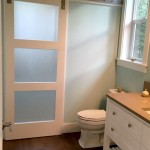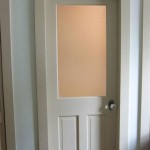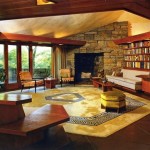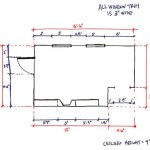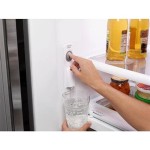How Much Do Prehung Interior Doors Cost To Build Per Square Foot?
Determining the cost to build prehung interior doors per square foot involves a multifaceted analysis. Rather than a simple calculation based on area alone, the pricing structure incorporates material costs, labor expenses, hardware requirements, and potential customization. Understanding these factors is crucial for accurate budgeting and informed decision-making whether you are a homeowner undertaking a renovation project or a contractor preparing a bid.
The concept of cost per square foot is frequently used in construction and real estate to provide a standardized measure for estimating project expenses. However, its applicability to prehung interior doors is indirect. The primary cost drivers are related to the door's overall size, material composition, and additional features, not directly proportional to the square footage. Therefore, while the idea of cost per square foot offers a general framework, it's important to break down the specific elements that influence the final price.
To accurately estimate the cost, it's necessary to consider the materials used for the door slab, the jamb, and the casing. Different wood species, composite materials, and hardware finishes contribute significantly to price variations. Similarly, the complexity of the door design, whether it's a standard flat panel or a more elaborate raised-panel design, will impact the labor involved in manufacturing and installation. The final price is realized when accounting for the door's total dimensions and how that impacts material usage and manufacturing complexity.
Key Factors Influencing the Cost of Prehung Interior Doors
Several key factors contribute significantly to the overall cost of prehung interior doors. Understanding these factors is essential for accurate budget estimation and project planning. These include material selection, labor expenses, hardware choices, and the level of customization desired.
Material Selection: The choice of materials for the door slab, jamb, and casing has a direct impact on the cost. Solid wood doors such as oak, maple, or cherry will be significantly more expensive than doors made from composite materials like MDF (Medium-Density Fiberboard) or hollow-core doors. Solid wood doors offer greater durability and a more premium aesthetic, justifying their higher price point. MDF doors provide a cost-effective alternative, particularly for painting, while hollow-core doors are the most budget-friendly option, often used in areas where sound insulation and durability are less critical.
The type of wood used for the jamb and casing also influences the expense. Pine is a common and relatively inexpensive option, while hardwoods like oak or maple are more costly but offer superior strength and resistance to wear. The quality of the materials used will contribute to the door's lifespan and aesthetic appeal.
Labor Expenses: Labor costs encompass the manufacturing and installation of the prehung interior door. Prehung doors require less on-site labor compared to installing a slab door and building the jamb separately. However, skilled labor is still necessary for proper fitting, alignment, and ensuring smooth operation. The complexity of the door design and any customization requirements can also impact the labor hours involved.
Installation labor rates vary depending on the region, the contractor's experience, and the project's scope. It's crucial to obtain multiple quotes from qualified professionals to ensure a competitive price. Additionally, any necessary modifications to the existing door frame or wall structure can add to the overall labor expenses.
Hardware Choices: Hardware includes door hinges, handles, latches, and any decorative elements. The quality and finish of these components significantly impact the overall cost. Basic hardware sets are readily available at affordable prices, while high-end designer hardware can substantially increase the budget. Choosing durable and aesthetically pleasing hardware can enhance the door's functionality and appearance.
Specialty hardware options, such as smart locks or concealed hinges, add to the expense. Consideration must be given to the style and functionality of the hardware to complement the door design and meet the specific needs of the space. Matching the hardware finish to existing fixtures and décor can create a cohesive look throughout the home.
Customization Requirements: Customization options, such as unique door sizes, panel designs, or custom finishes, will significantly increase the cost of prehung interior doors. Non-standard door sizes require specialized manufacturing processes and additional material. Intricate panel designs or decorative elements add to the labor time during production.
Custom finishes, such as staining or painting with specific colors or textures, also contribute to the price. Matching existing trim or furniture can require custom color mixing and application, increasing the labor costs. The more extensive the customization required, the greater the overall expense of the prehung interior door.
Estimating the Cost Per Door: A Breakdown
While a direct cost per square foot for prehung interior doors is not typically calculated, you can estimate the cost per door by considering the individual components. This involves breaking down the expenses related to the door slab, jamb, casing, hardware, and installation. By analyzing these elements, you can arrive at a more accurate estimate of the total cost per door.
Door Slab Cost: The door slab represents a significant portion of the overall cost. As previously mentioned, the material used for the door slab has a considerable impact on the price. Hollow-core doors are generally the least expensive, ranging from $50 to $150 per slab. MDF doors typically cost between $100 and $300 per slab, depending on the design and thickness. Solid wood doors are the most expensive, with prices ranging from $200 to $1000 or more per slab, depending on the wood species and construction method.
The dimensions of the door slab also influence the price. Larger doors require more materials and may necessitate specialized manufacturing techniques, increasing the cost. Consider the standard door sizes commonly available to minimize expenses and potential delays.
Jamb and Casing Cost: The jamb and casing provide the framework and trim around the door opening. The material used for the jamb and casing, as well as the complexity of the design, influence the cost. Pine jambs and casings are a cost-effective option, while hardwoods like oak or maple are more expensive.
A basic pine jamb and casing set can range from $30 to $70. Hardwood options can cost between $50 and $150 or more, depending on the wood species and profile. Decorative casings with intricate designs will also add to the expense.
Hardware Cost: The cost of hardware varies depending on the quality, finish, and style chosen. A basic knob or lever set can range from $10 to $30. Higher-end hardware sets with designer finishes or smart lock features can cost $50 to $200 or more. Hinges are typically included with the prehung door unit, but specialty hinges, such as concealed hinges, will add to the expense.
Installation Cost: Installation costs vary depending on the complexity of the job and the contractor's rates. A standard prehung door installation can range from $100 to $300 per door. Factors that can increase installation costs include the need to modify the existing door frame, repair any wall damage, or install additional trim.
Obtaining multiple quotes from qualified contractors is crucial to ensure a competitive price. Be sure to clarify what is included in the installation estimate, such as removing the old door, preparing the opening, installing the new door, and finishing the trim.
By adding up the costs of the door slab, jamb and casing, hardware, and installation, you can arrive at an estimated cost per prehung interior door. Keep in mind that these are just estimates, and the actual cost may vary depending on the specific project requirements and market conditions.
Strategies for Minimizing Prehung Interior Door Costs
There are several strategies to minimize the costs associated with prehung interior doors without sacrificing quality or aesthetics. These include opting for standard door sizes, selecting cost-effective materials, considering DIY installation, and shopping around for the best prices.
Opt for Standard Door Sizes: Choosing standard door sizes can significantly reduce costs compared to custom sizes. Standard door widths are typically 24, 28, 30, 32, and 36 inches, with a standard height of 80 inches. Selecting a door size that fits within these dimensions avoids the need for specialized manufacturing and reduces material waste. Consider the existing door openings in your home and choose standard sizes that will minimize modifications.
Select Cost-Effective Materials: Choosing budget-friendly materials can help to reduce the overall cost of prehung interior doors. Hollow-core doors and MDF doors offer cost-effective alternatives to solid wood doors. Pine jambs and casings are less expensive than hardwoods like oak or maple. Choosing basic hardware finishes instead of designer options can also save money. Balancing cost with durability and aesthetics is crucial to ensure a long-lasting and visually appealing result.
Consider DIY Installation: Installing prehung interior doors yourself can save on labor costs. However, this requires a certain level of DIY experience and the necessary tools. If you are comfortable with basic carpentry skills, such as measuring, cutting, and aligning, you may be able to successfully install prehung doors yourself. There are numerous online resources and tutorials available to guide you through the process.
If you choose to DIY, be sure to take accurate measurements, follow the installation instructions carefully, and use the appropriate safety gear. If you are unsure about any aspect of the installation, it is best to hire a professional contractor to avoid costly mistakes.
Shop Around for the Best Prices: Comparing prices from different suppliers and contractors can help you to find the best deals on prehung interior doors. Obtain quotes from multiple sources and compare the costs of the door slab, jamb and casing, hardware, and installation. Look for sales, discounts, and promotions that can further reduce the price. Negotiate with suppliers and contractors to see if they are willing to offer a better price. Checking online retailers can also provide competitive pricing and a wide selection of options. Thorough research and comparison shopping can help you to save significant money on your prehung interior door project.

Masonite 30 In X 80 2 Panel Square Primed Right Hand Hollow Core Composite Single Prehung Interior Door 91968 The Home Depot

Builders Choice 30 In X 80 6 Panel Right Hand Hemlock Pine Single Prehung Interior Door Hd66s26r The Home Depot

Reliabilt 60 In X 80 White Solid Core 5 Panel Equal Universal Smooth Prefinished Pine Mdf Flat Jamb Double Prehung Interior Door The Doors Department At Com

Reliabilt Shaker 24 In X 80 1 Panel Square Solid Core Primed Pine Wood Right Hand Inswing Single Prehung Interior Door The Doors Department At Com

Krosswood Doors 36 In X 96 Shaker 5 Panel Primed Solid Core Mdf Left Hand Single Prehung Interior Door Kw Sh151 3080 Lh The Home Depot

Mmi Door Shaker Flat Panel 36 In X 80 Left Hand Solid Core Primed Hdf Single Pre Hung Interior With 6 9 16 Jamb Z03745798l The Home Depot

Mmi Door 32 In X 80 Smooth Cratsman 3 Panel Left Hand Solid Core Primed Molded Composite Single Prehung Interior Z009486l The Home Depot

Prehung Interior Doors At Com

Krosswood Doors 32 In X 80 2 Panel Square Top Solid Wood Core Rustic Knotty Alder Left Hand Single Prehung Interior Door Kw 305 2868 Lh The Home Depot

18 In X 8 Ft White 2 Panel Shaker Solid Core Primed Mdf Prehung Interior Door Doors
Related Posts


